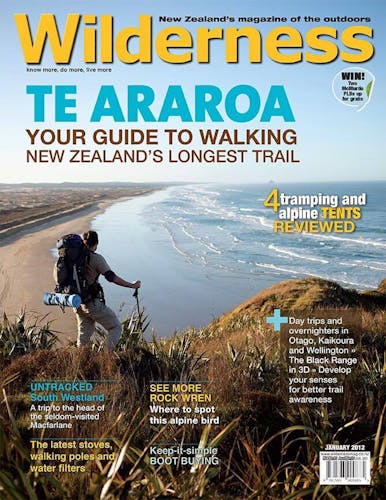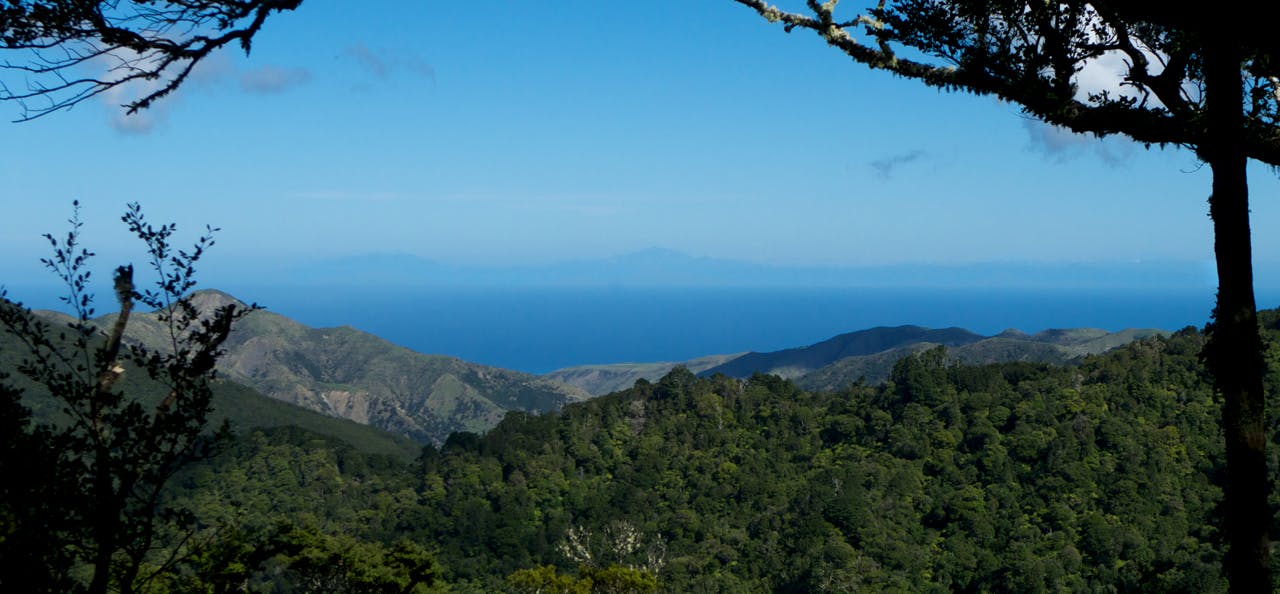- Grade
- Moderate
- Accom.
- Washpool Hut, 6 bunks; Kawakawa Hut, 6 bunks
- Access
- From Putangirua Pinnacles Campsite, halfway between Lake Ferry and Cape Palliser
- Map
- BQ33 Lake Wairarapa, BR33 Ngawi
- Links/Files
- Download the route notes, maps and GPX file
Washpool and Kawakawa Huts, Aorangi Forest Park
Busy only in birdlife, with cosy huts and impressive views, Aorangi Forest Park offers Wellington trampers an isolated alternative to the more popular Rimutaka and Tararua ranges.
We had planned a three day walk there, beginning by the sea at the Putangirua Pinnacles and finishing approximately 25km away where the Mangatoetoe Tack meets the coast. A car-switch would be needed, but with only one car available, we stashed a bike in the bushes at the Mangatoetoe end and drove back to the start.
The trip began down a dry river bed before entering the bush and climbing to a lookout over the pinnacles – a cluster of jagged gravel spires – the lair of a ghost army in the final of the Lord of the Rings trilogy.
A road, cut through the forest, led to a ridge and grassy track through windswept bush. At a clearing were views of the sea, the Rimutakas and Lake Ferry.
From a crest, we began walking downhill, ducking wood pigeons as they burst from matai trees hung with berries. Downhill was difficult, steep enough to require a crawl in places, and it was with tender joints that we entered Washpool Hut, our destination for the day.
It’s a small, basic hut – six bunks, a bench and a log burner – but it’s tidy and in one of the shadier spots in an otherwise sunny forest. Mattresses are mould stained, although clean on one side. Five minutes below it is Washpool Creek where we had a brief plunge before a hot meal, drink and conversation around the hut fire.
Next day, we crossed the river and headed straight up a spur out of the valley, then down again to Pararaki Hut. After that first slog up hill and difficult descent, we went on to do the same again, going in and out of valleys, some choked with fallen trees. It was a hard day rewarded with views of the sea and the Kaikouras just visible above the southerly horizon. Finally there was a crumbly spur down to the river again, and a less strenuous walk to Kawakawa Hut.
This is another six bunker, slightly smaller than Washpool. Accessible from a road crossing private land, it is popular with hunters who can drive in supplies for a long stay.
The last day was spent almost entirely on the river. A vehicle track from the hut led along the south branch of the river, and to a narrow track along the banks. We followed this to a fork, where we climbed a spur and crossed a low saddle – a cakewalk after previous slopes. Then, it was back onto the river again, the track crisscrossing it every dozen metres, until we reached Mangatoetoe Hut. There is what appears to be an abandoned farmer’s hut on the opposite side of the river, but Mangatoetoe was far more inviting. Six bunks again but with plenty of space, and water on tap, in a sunny clearing sheltered by kanuka trees. From there we followed the river through terraces and farmland, past gorse and beehives among the manuka until we arrived at the sea and the end of our three day walk.
Dusty and exhausted we retrieve the bike from its hiding place, but faced with glaring sun, sections of unsealed road and the wind whipping off the sea, we hitched a ride instead.
– John Summers







